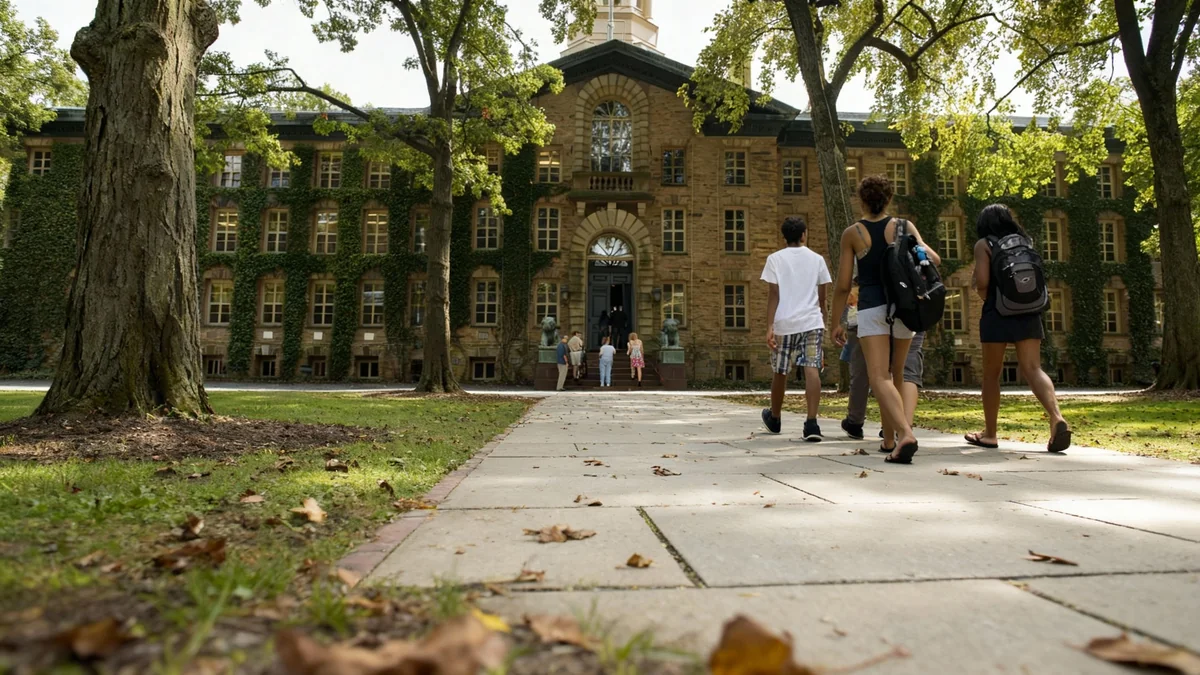Princeton University has confirmed a data breach that exposed the personal information of alumni, donors, and students. The incident, which occurred on November 10, targeted a database within the university's advancement office and was contained within 24 hours.
The university stated that outside actors gained unauthorized access to the system through a phone-based phishing attack on a university employee. The compromised data included names, contact information, and details related to fundraising activities and donations. Princeton officials have assured the community that they believe no other technology systems were affected by the breach.
Key Takeaways
- Princeton University's advancement office database was breached on November 10.
- The attackers gained access for less than 24 hours via a phone phishing scheme.
- Exposed data includes personal details of alumni, donors, and students, such as contact information and donation history.
- The incident follows similar cyberattacks at other Ivy League schools, including Harvard, Penn, and Columbia, in recent months.
Details of the Princeton Incident
Princeton University officials disclosed that the security breach was identified and neutralized swiftly. In a statement released to the university community, administrators explained that the intrusion was limited to a single system used for managing relationships with alumni and donors.
The method of entry was identified as a phone phishing incident, a form of social engineering where an attacker deceives an individual over the phone to gain access credentials. An employee with access to the advancement database was targeted, leading to the compromise.
Breach Timeline
- Date of Incident: November 10
- Duration of Access: Less than 24 hours
- Method: Phone Phishing (Social Engineering)
- Target System: Advancement Office Database
The university has not received any communication or demands from the attackers. While the investigation is ongoing, Princeton has stated it has no "factual information" to suggest the attack is connected to other recent incidents at peer institutions. The focus has been on securing the affected system and notifying individuals whose information may have been exposed.
A Pattern of Attacks on Elite Universities
The breach at Princeton is not an isolated event but rather the latest in a series of cyberattacks targeting America's most prestigious universities. These institutions have become high-value targets for hackers due to the vast amounts of sensitive personal and financial data they store.
In recent months, other Ivy League schools have reported significant security incidents, highlighting a troubling trend for the higher education sector.
Recent Ivy League Breaches
The University of Pennsylvania announced on October 31 that it had discovered a compromise of systems related to its development and alumni activities. According to Penn, the attacker used a sophisticated identity impersonation technique to gain credentials. The breach affected the university's Salesforce customer relationship management system and its SharePoint file repository.
That same month, Harvard University began investigating a potential data compromise linked to a vulnerability in Oracle's E-Business Suite software. A Harvard spokesperson noted that the investigation suggested the incident impacted a limited number of individuals within a small administrative unit.
Why Target Universities?
Educational institutions, particularly elite ones, are attractive targets for cybercriminals. They hold a wealth of sensitive data, including:
- Personal identifiable information (PII) of students, faculty, and staff.
- Financial details of parents, donors, and alumni.
- Cutting-edge academic research and intellectual property.
- Contact information for influential and high-net-worth individuals.
Perhaps one of the most extensive recent attacks occurred at Columbia University in June. That breach compromised the personal information of approximately 870,000 people, including students and applicants. A review of some of the stolen data revealed that it included financial information and academic performance records. Columbia officials described the attack as the work of a politically motivated "hacktivist."
The Challenge of University Cybersecurity
Higher education institutions face unique cybersecurity challenges. Their open, collaborative environments are designed to foster learning and research, which can sometimes conflict with the strict security protocols found in corporate settings. The constant flow of new students, transient faculty, and a culture of information sharing creates numerous potential entry points for attackers.
Furthermore, the reliance on a wide array of software systems, from student information platforms to fundraising databases and research archives, expands the potential attack surface. As demonstrated by the recent incidents, attackers are using a variety of methods to exploit these environments, including:
- Social Engineering: As seen at Princeton and Penn, attackers are manipulating employees to gain access, bypassing technical defenses.
- Software Vulnerabilities: The Harvard incident highlights the risk posed by flaws in third-party software used by universities.
- Hacktivism: The politically motivated attack on Columbia shows that motives can extend beyond financial gain.
As universities continue to digitize their operations and data, the need for robust cybersecurity measures, continuous employee training, and rapid incident response protocols has never been more critical. The recent string of attacks on Ivy League schools serves as a stark reminder that even the most well-resourced institutions are vulnerable.





